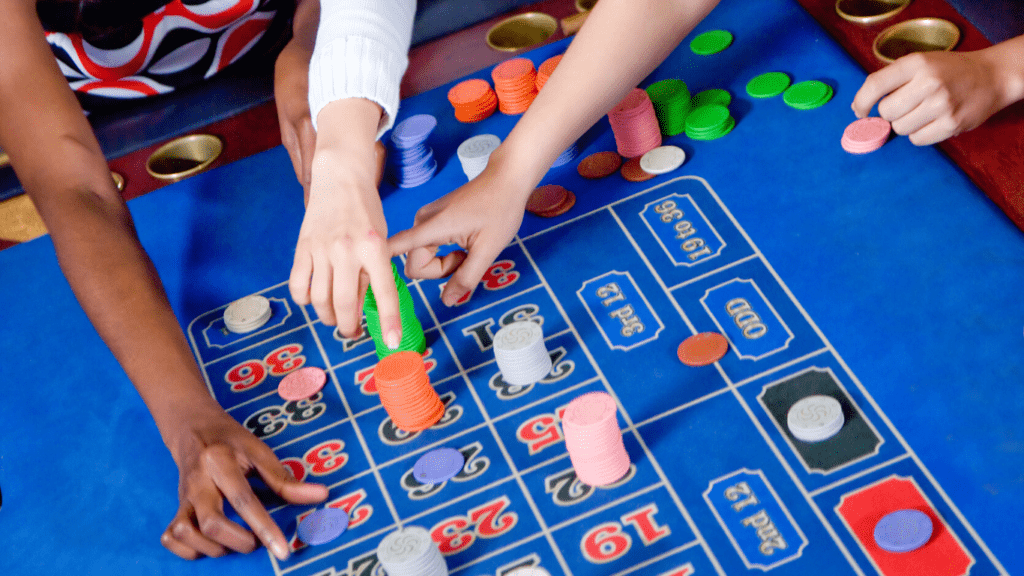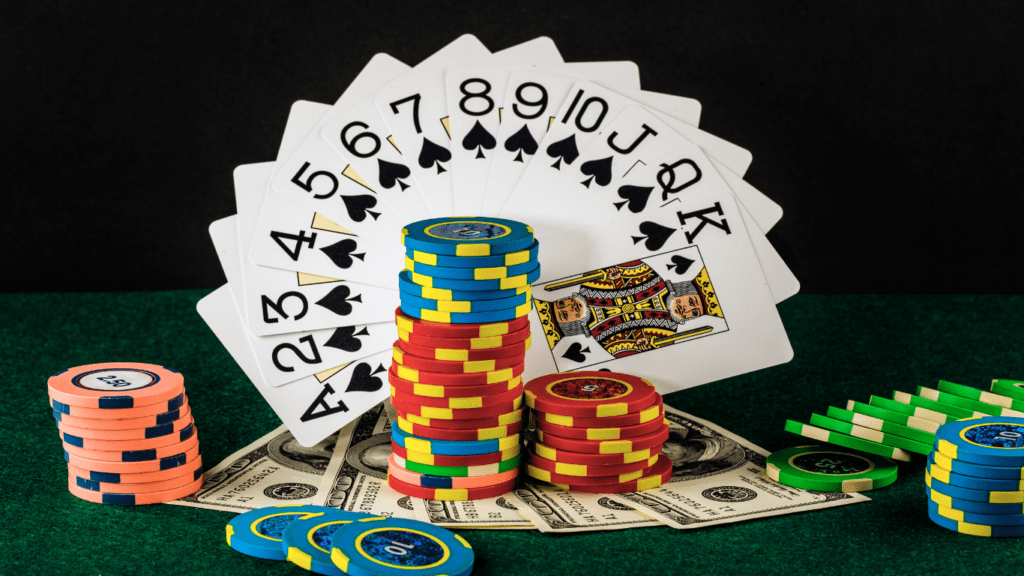Understanding Self-Exclusion Programs
Self-exclusion programs create a formal framework for individuals to voluntarily restrict access to gambling activities. These programs serve as a practical tool for those seeking temporary or long-term breaks to regain control.
What Are Self-Exclusion Programs?
Self-exclusion programs are initiatives that allow individuals to block access to gambling platforms, both online and offline. Participants can enroll for set durations, ranging from months to several years. Examples include government-regulated programs like the UK’s GamStop or casino-operated exclusion lists. Once registered, operators must enforce the restriction, denying access to their services.
The enrollment process typically involves identity verification to ensure effective implementation. Some programs also include counseling or educational resources to support participants during their self-exclusion period. These measures increase accountability and help users focus on alternative activities.
The Purpose and Benefits of Taking a Break
The purpose of self-exclusion programs is to provide a structured means to disrupt compulsive gambling behaviors. By temporarily removing access, individuals gain the necessary space to address underlying issues or seek professional help when needed.
Benefits include reduced financial strain, lowered stress levels, and improved relationships with family or friends. Self-exclusion also creates opportunities to develop healthier habits, such as pursuing hobbies or focusing on personal growth. For instance, many users report an enhanced sense of control and mental clarity after engaging with these programs.
When to Consider Self-Exclusion
Self-exclusion becomes relevant when gambling habits negatively impact daily life. Knowing when to take this step begins with identifying patterns in behavior and their consequences.
Recognizing the Signs of Problematic Behavior
Identifying problematic gambling behavior involves evaluating its effects. Key indicators include financial strain, such as:
- difficulty paying bills
- borrowing money to gamble
- emotional distress
like frequent feelings of guilt or shame after gambling. Strained relationships, decreased work performance, and neglect of social or personal responsibilities also point to issues. For instance, missing social obligations or lying about gambling activities can highlight the need for intervention.
Signs of dependency, like an increased frequency or intensity of gambling to achieve satisfaction, also suggest a problem. Individuals who feel compelled to gamble despite negative consequences or experience agitation when unable to gamble are likely facing compulsive patterns.
Assessing the Need for a Break
Assessing the need for self-exclusion involves analyzing how gambling affects well-being. If gambling causes disruptions, such as frequent arguments about losses or obsessive thoughts about placing bets, a break becomes logical. Consistent loss of financial stability, including draining savings to sustain gambling, can signal that self-exclusion is necessary.
Taking past attempts to control gambling into account is also critical. If previous efforts to gamble moderately have failed, committing to self-exclusion provides a structured interruption. When emotional or mental health suffers due to overwhelming cravings, self-exclusion acts as a proactive step toward regaining control.
How Self-Exclusion Programs Work

Self-exclusion programs provide a straightforward process for individuals to restrict their gambling participation. These programs include key steps for enrollment and specific features designed to enforce restrictions effectively.
Steps to Enroll in a Program
Enrollment typically starts by selecting a suitable self-exclusion program, such as GamStop in the UK or operator-specific options. I begin by completing an online or in-person application, which usually requires personal information like name, address, and date of birth for identity verification. Once verified, I specify the duration of my exclusion period, often ranging from six months to five years or more, depending on the program.
Some programs offer additional resources during the enrollment process. For example, I might receive connections to counseling or educational services to guide me in managing problem behaviors. In regulated regions, mandatory exclusions may also prevent me from accessing gambling advertisements.
Features and Restrictions of Self-Exclusion
- Self-exclusion programs enforce strict controls on gambling access. When I enroll, my account at participating gambling operators will be suspended, and I’m barred from creating new accounts.
- For physical venues like casinos, my name can be added to databases restricting my entry. Online platforms use technology to block access across websites and apps within the program’s network.
- Key restrictions include the inability to reverse a self-exclusion decision before the agreed-upon period ends. This non-revocable condition ensures I’m fully committed to taking a break.
- Some programs extend the ban automatically unless I request reactivation, reinforcing long-term protection.
- Beyond gambling restrictions, many initiatives also restrict the receipt of promotional materials, helping me avoid temptation and triggers.
Challenges and Limitations of Self-Exclusion Programs
Self-exclusion programs provide valuable support, but they come with certain limitations and challenges. Recognizing these obstacles helps in setting realistic expectations and addressing potential issues effectively.
Potential Drawbacks to Consider
Limited enforcement is a concern, as these programs rely on participants to self-identify and comply with restrictions. For online platforms, determined individuals might find ways around the exclusions by using unregulated or international gambling sites not covered by the program. In physical venues, enforcement may vary based on staff training and local policies.
Emotional and psychological challenges can arise, particularly for those deeply dependent on gambling as a coping mechanism. Without adequate support, some individuals might experience withdrawal symptoms, feelings of isolation, or increased anxiety during the exclusion period.
Exclusion duration inflexibility can deter participation for some. Since the agreed-upon time frame cannot be altered, individuals hesitant about long commitments might choose not to enroll, fearing regret or the inability to access gambling if circumstances change.
Overcoming Barriers to Success
Support networks play a crucial role in addressing program limitations. I’ve found that counseling, peer support groups, or family involvement helps participants manage emotional challenges, reducing the risk of relapse during the exclusion period.
Awareness campaigns strengthen program enforcement by educating individuals about unregulated gambling dangers and encouraging venues to adopt stringent compliance measures. Clear communication between regulators and operators further ensures consistency in restricting access.
Integration of additional resources enhances the program’s effectiveness. Educational tools, budgeting workshops, or addiction management strategies provide participants with the skills needed to sustain their progress and reduce reliance on gambling as a form of escapism.
Strategies for a Successful Break
Taking a break from gambling requires planning and structured techniques to ensure lasting benefits. Implementing effective strategies helps manage challenges and fosters personal growth during this time.
Building a Support System
A strong support system ensures emotional resilience throughout a gambling break. I rely on trusted individuals, like family or friends, for accountability and encouragement. Seeking professional assistance from counselors or therapists helps address underlying triggers or behavioral patterns. Support groups, such as Gamblers Anonymous, provide shared experiences and practical advice, which can be invaluable for staying motivated and committed.
Communicating my decision to take a break ensures those close to me are aware of my goals and can provide relevant support. Involving others in this process reduces the sense of isolation and reinforces my resolve to maintain boundaries.
Exploring Alternative Activities
Engaging in alternative activities refocuses energy and redirects cravings. I explore hobbies like exercise, creative arts, or learning new skills to fill time previously spent gambling. Physical activities like running or yoga improve my mental well-being and reduce stress. Creative outlets such as painting, music, or writing stimulate my mind and create a positive sense of accomplishment.
Volunteering or participating in community programs strengthens my social connections and offers a feeling of purpose. If I pursue interests that align with my values, I’m more likely to stay engaged and steer clear of gambling-related temptations.


 Mark Buxtononics is the Senior Betting Analyst at Gamble Time Hub, bringing sharp analytical skills and a deep understanding of betting markets to the forefront. Specializing in data-driven insights and predictive analysis, Mark delivers in-depth evaluations of sports betting trends, odds movements, and strategic plays. His work helps readers make smarter, more informed decisions across a variety of betting platforms. With a commitment to clarity and accuracy, Mark plays a key role in establishing Gamble Time Hub as a reliable source for expert betting knowledge.
Mark Buxtononics is the Senior Betting Analyst at Gamble Time Hub, bringing sharp analytical skills and a deep understanding of betting markets to the forefront. Specializing in data-driven insights and predictive analysis, Mark delivers in-depth evaluations of sports betting trends, odds movements, and strategic plays. His work helps readers make smarter, more informed decisions across a variety of betting platforms. With a commitment to clarity and accuracy, Mark plays a key role in establishing Gamble Time Hub as a reliable source for expert betting knowledge.

